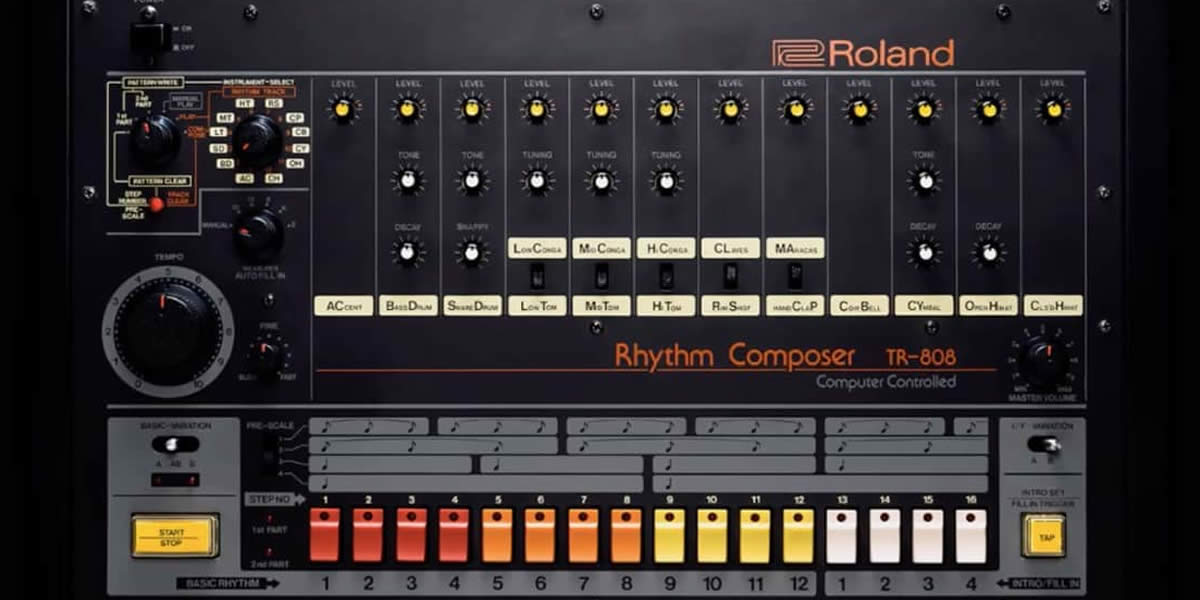Travel back to the 80s with Nelson Game Watches — the ultimate wrist-sized arcade. Discover their impact, cult status, and why they still matter.
Let’s rewind a bit. No, not like clicking “rewind” on a YouTube video—we’re talking about slamming a chunky VHS into your family’s top-loader VCR and hoping the tape wasn’t already chewed up. Picture this: It’s the 80s. Neon windbreakers. Synth music blasting from the radio. You’re sipping a Capri Sun, your Walkman’s blasting Duran Duran, and—most importantly—you’ve got a Nelson Game Watch strapped to your wrist.
This wasn’t just some plastic toy with flashing lights. This was the future. You weren’t just telling time—you were dodging asteroids, outrunning aliens, and saving the world… all between math class and lunch. Nelson Game Watches weren’t just gadgets—they were a rite of passage. These watches captured the essence of an entire decade’s obsession with compact, high-tech fun. And they looked cool. Unreasonably cool.
If you grew up in the 80s, you probably remember the feeling of pulling your jacket sleeve back just far enough to check the time—and maybe sneak in a round of Space Attacker before your teacher turned around. If not? Buckle in, my friend. We’re about to dive deep into the magic, madness, and mayhem of a gadget that deserves a comeback, one pixelated beep at a time.

The Basics: What Were Nelson Game Watches?
Before we get too misty-eyed, let’s lay down the facts:
- Title: Nelsonic Game Watches (commonly called Nelson Game Watches)
- Developer: Nelsonic Industries
- Publisher: Nelsonic Industries
- Release Dates: Early to late 1980s
- Genre: Wristwatch arcade games (yup, that was a thing)
- Platforms: Game-integrated wristwatches (physical hardware)
Okay, so it wasn’t “platforms” like PlayStation or NES. This was pre-App Store. The platform was your wrist. Still not impressed? Just wait.
The Games: Tiny Screens, Big Adventures
Here’s where things get juicy. Nelson cranked out a bunch of these beauties, each with its own miniature game—simplified, sure, but surprisingly addictive. Let me run through some of the greatest hits:
Pac-Man
Ah yes, the trailblazer. Picture this: you’re a kid in ’83, your hair’s got that wind-blown BMX look, and you’ve got a freakin’ Pac-Man arcade right on your wrist. Tiny Pac-Man, chomping away at dots while ghosts lurk in the corner of your display. The tension? Unreal. The buttons were clunky, sure, and the screen looked like it was lit by candlelight—but who cared? You were playing Pac-Man—while pretending to check the time in class. Total stealth mode.
Ms. Pac-Man
Ms. P brought the sass. She had new mazes, smarter ghosts, and a sense of style that screamed shoulder pads and high heels. The gameplay was essentially a reskin of the OG Pac-Man, but we didn’t mind—because Ms. Pac-Man had attitude. And the watch? Sleek, pink-accented, and cool enough that even your sister wanted one.
Q*Bert
Oh man, this little pyramid-jumper gave us so many finger cramps. Q*Bert on a Nelsonic watch meant tapping away frantically as your orange buddy zig-zagged around changing block colors while trying not to swear (remember those $#@! speech bubbles?). The screen was so tiny, you basically had to squint like you were looking into the Matrix, but somehow, it worked. Plus, that sound effect when you died?

Frogger
Forget Crossy Road. Frogger invented highway-crossing stress. You had to guide your poor little frog across perilous roads and even scarier rivers (curse you, alligators). The Nelsonic version stripped it down, sure, but it kept that perfect “just one more try” loop. And let me tell you, nothing makes you feel alive like dodging a pixelated semi-truck with a barely responsive button.
Donkey Kong
Now we’re talking climbing barrels and saving damsels. Mario—still in his overalls and pre-“It’s-a-me!” era—had to dodge barrels, climb ladders, and face off against the giant ape. On your wrist. It was like someone shrunk the entire arcade machine with a ray gun and strapped it to your arm. Granted, the “jump” button was hit or miss (more like miss), but who’s counting when you’re fighting gorillas in math class?
The Legend of Zelda
This one? It was epic. Zelda on a watch felt like Nintendo had handed you a secret relic from Hyrule itself. Link, armed with a sword the size of a flea, ventured through dungeons, battled monsters, and collected Triforce pieces—all from behind your digital watch face. The screen had multiple “rooms,” which made it feel huge by watch-game standards. I mean, it was borderline RPG territory. You felt like a mini hero. Or at least a warrior of detention hall.

Super Mario Bros.
Okay, deep breath—because this was the big one. This watch blew every kid’s mind in ’89. Super Mario Bros. wasn’t just a game—it was the game. And now it was on your wrist, hopping over fireballs, squashing Goombas, and leaping across pits in a stripped-down but instantly recognizable take on the NES classic. It even had little brick blocks and flagpoles! This thing was your golden ticket to retro glory. And yeah, sometimes the controls were a little… let’s say “interpretive”—but you didn’t care. You were Mario, and your wrist was the Mushroom Kingdom.
Tetris
Cue the Russian folk tune. Tetris on a Nelsonic watch was like having your own private puzzle dojo. You’d twist and drop those tetrominoes like a digital samurai, trying to line ‘em up just right while your teacher explained long division. Let’s be real: if you weren’t sneaking in one more line-clear during study hall, were you even living in the 80s? The game would speed up until you were sweating bullets, and suddenly your tiny timepiece became a battleground of geometric anxiety.
Ghostbusters
Who you gonna call? Your wrist, apparently. And honestly, this one was weirdly intense. You were zipping around town trying to wrangle ghosts before they turned your screen into a haunted mess. This watch had you zapping and trapping like a total pro—though half the time, it felt like you were just wildly mashing buttons in a ghost panic. And that was part of the charm! You’d sit there, laser-focused, yelling “Get in the trap!” while your science teacher raised an eyebrow. But who cares? You were saving NYC from a pixelated Gozer.
G.I. Joe: A Real American Hero
Let’s be real—if you had this watch, you were already halfway to joining the coolest elite military task force ever created by toy companies. You’d guide your Joe across enemy terrain, dodge Cobra lasers, and complete stealth missions that made you feel tactical. It was low-key one of the more “action-packed” watches Nelsonic ever put out, complete with explosions (in your imagination) and the proud sense that you were saving the world one beep at a time. Bonus points if you shouted “Yo Joe!” after every win.

Barbie Tennis
This one? Honestly, it kinda slapped. Barbie wasn’t just about fashion here—she was on the court, serving aces and totally dominating in this glam-meets-gameplay showdown. You had to time your shots just right and anticipate your opponent’s next move. It was super simple, sure, but it felt slick and polished—like a boutique version of Pong, wearing lipstick. And the watch design? Pink, bold, and proud. Don’t let anyone tell you Barbie couldn’t game—she was serving both fashion and forehands, all before lunch break.
Nelson made more, too—sports-themed games, space shooters, even a few knockoff titles with suspiciously familiar characters (looking at you, “Jungle King”).
Cultural Impact: The Wrist That Changed the Game
So what was it about these things?
The 80s were so 80s. Everything was “high-tech” even if it wasn’t. This was the era that gave us LaserDisc, Speak & Spell, and the Casio calculator watch. The Nelson Game Watch? It was a flex. Kids showed it off at lunch like it was the crown jewels.
In a time when arcades were temples and home consoles still felt a little like wizardry, Nelson Game Watches were revolutionary. You didn’t need quarters. You didn’t need a TV. You just needed your wrist—and decent thumb coordination.
They were very 80s-themed: they tapped into the tech craze, the arcade craze, the “mini-everything” craze (remember Micro Machines?), and let’s be honest—having a tiny playable Donkey Kong game strapped to your arm made you feel like James Bond’s kid brother.
Even teachers gave up trying to stop kids from sneaking a round in class. “Are you checking the time?” Sure, Mr. Thompson. Just checking the time… while blasting alien ships in Sector 7.
Even today, collectors are scrambling for working versions of these watches. They’re rare, fragile, and in the world of emulators and Raspberry Pis, completely unnecessary—and yet completely irresistible. Heck, there’s an entire corner of retro YouTube and subreddits dedicated to them. Some people even mod them into actual wearable watches again using modern parts. It’s beautiful and kind of absurd. But that’s the 80s for you.
Behind the Scenes: How It All Started
Nelsonic Industries wasn’t exactly Nintendo, but they were smart. They realized early that kids didn’t just want to wear time—they wanted to play with it. And when Nintendo’s early Game & Watch series started to blow up in Japan, Nelsonic pounced on the Western market.
The magic wasn’t just in the licensing (though scoring Donkey Kong and Zelda was no small feat)—it was in the engineering. Fitting a game and a clock into a tiny plastic shell required some serious ingenuity. And let’s not forget, this was the 80s. You didn’t have the benefit of sleek microchips and flexible OLED displays. Nope. This was clunky, pixel-by-pixel programming, low-res LCD screens, and beep sounds that could summon dogs from three blocks away.
There’s even an old story (hard to verify, but worth repeating) that some devs hand-drew every animation frame pixel by pixel on transparencies before shrinking them down and programming them in. Wild.
Easter eggs? Oh yeah. Some watches had secret modes—press a combination of buttons and you’d get a bonus level, or weird test screen. Most kids never found them. But the ones who did? Instant legend.
Reception and Legacy: Then vs. Now
So, how did the world react?
In a word: bonkers.
These watches were sold out everywhere during peak holiday seasons. Some schools outright banned them. Magazines gave them rave reviews, even if they called the gameplay “simplistic”—because duh, it was a watch. But that didn’t stop the hype.
Fast forward a few decades, and the nostalgia train is full steam ahead. Retro collectors hunt these things like Indiana Jones on eBay. Gamers fire up MAME to relive those tinny, glorious 3-level games. And in the age of smartwatches and portable everything, the Nelson Game Watch feels quaint and revolutionary at the same time.
Were they perfect? Of course not. The screens were hard to read in bright light. The controls were finicky. And some of the games were basically glorified timers with sound effects. But man did they leave a mark.
There was never an official remake line, but the spirit lives on. The Game & Watch reboot from Nintendo? Totally inspired by Nelson’s legacy. The new Fossil x Star Wars collabs with little animations? Echoes of this era. Even the Apple Watch has game apps now—none as charming as Nelson’s stuff, but you can feel the influence.

FAQ: Quick Bits for the Curious
Are Nelson Game Watches worth anything today?
Absolutely! Mint-condition models can go for hundreds. Especially if they’re licensed games like Donkey Kong or Zelda.
Can I play them on an emulator?
Yes—sort of. Some have been preserved via emulation, though it’s tricky because of the custom hardware. MAME and some LCD-specific emulators are your best bet.
Did they really get banned in schools?
Yep. Just like Tamagotchis in the 90s. Too many kids “checking the time” during tests.
Were they better than Nintendo’s Game & Watch?
Debatable. Game & Watch had smoother gameplay, but Nelson had the wristwatch form—and cooler licenses in some cases.
Are there modern versions or reissues?
Not officially. But there are DIY projects online where people recreate the games or mod modern watches to include them.
Why Nelson Game Watches Still Matter
So, here’s the thing: In an era defined by cassette tapes, shoulder pads, and radical everything, the Nelson Game Watch stood out. It wasn’t just a toy—it was a status symbol, a pocket-sized arcade, and a little slice of magic you could take anywhere.
They were quirky, bold, unapologetically 80s-themed gadgets that turned your wrist into a battleground, a race track, or a ghost-hunting arena. They captured a moment in tech history where we believed anything was possible—especially if it beeped.
And honestly? They were fun. Simple, silly, sometimes frustrating—but fun. And that’s what gaming in the 80s was all about. Before we worried about frame rates and online multiplayer, we just wanted to play. And Nelson delivered, in the weirdest, coolest way possible.
If you’ve never tried one, track one down. Fire it up. Close your eyes. Let the tinny beeps pull you back into a world where the future was worn on your wrist, and every second was a chance to beat your high score.
Just don’t let your boss catch you “checking the time.”





